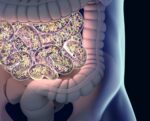Seeking What Is Possible: Start With the Impossible

I was diagnosed with Parkinson’s disease at 64. That is close to the average age that most Parkinson’s patients are diagnosed. My goal has been to live to the age of 85, one year beyond the age of my grandfather. In my lineage, he held the record for years lived.
But this chronic illness has given me doubts — not only doubts about living that long, but also nearly overpowering fears about the end of my time being filled with suffering. I don’t want 20 years of misery with this chronic disease if I can do something about it.
My new book, “Possibilities with Parkinson’s: A Fresh Look,” describes my search for answers. The book took seven years of full-time work. One of the book’s goals was to describe a personal brain rehabilitation program I could use to live well through my senior years. Another was to describe a theory that explains why patients with PD are so different from one another. Now that the book is published, life is affording me the opportunity to see the intricate web of connections behind both the design of brain rehabilitation for PD and the theory to explain individualized PD presentations. I want to live better with PD. The most difficult obstacle is believing it can be possible.
Based on my research and clinical experience, I started with some basic assumptions:
1. PD is a dopamine nerve-destruction disease.
2. The diagnosis requires specific symptoms — bradykinesia, rest tremor, muscle rigidity, and postural instability — used by the medical community. But these are only the motor symptoms and do not take into account the nonmotor presentations.
3. The disease is affecting the brain long before the diagnosis. Symptoms of Parkinson’s and the rate of progression differ among individuals. The National Institute on Aging cautions, “Sometimes people dismiss early symptoms of Parkinson’s as the effects of normal aging. In most cases, there are no medical tests to definitively detect the disease, so it can be difficult to diagnose accurately.”
4. The brain is plastic, continually molding itself to the changes of disease, including our reactions. Our brain is changing prior to diagnosis and is influenced by the lifestyle of the patient. Clinical trials proposed in Sweden suggest that, “Since there is currently no cure for PD, findings of neuroplastic brain changes in response to exercise would revolutionize the way we treat PD, and, in turn, provide new hope to patients for a life with better health, greater independence and improved quality of life,” according to a study published in the journal BMC Neurology.
I strongly believe that individualized presentation is a hallmark of PD. The spectrum stage theory I proposed can explain why, despite some similarities, many PD patients do not always present with all the cardinal symptoms. A medical provider might not easily confirm the diagnosis on the first or second visit. I’ve heard from several patients that their symptoms didn’t match the classic presentation of Parkinson’s, and therefore, they experienced the disease long before the medical community would recognize it. Their brains were being shaped long before diagnosis.
Medical doctors don’t write up detailed rehabilitation plans for those who suffer from brain trauma. It’s not their expertise. In my experience as a rehabilitation clinician, it was my role to design a model to explain neurological breakdowns and then provide a model for working around the deficits. I took this same process and applied it as a rehab plan for myself.
For me, what is possible is strengthened by the science that supports bringing the possible into reality. The spectrum stage theory helps explain the hallmark PD features of individualized presentation. It also points us to the path of possibility, a path of brain rehabilitation using the second dopamine center.
Our reactions to the slow nerve damage of PD prior to diagnosis create coping strategies that can get in the way. For instance, we may believe in the truth coming from the broken PD brain. In all actuality, it may just be a faulty perception on our part. We can train our plastic brain to react in a new way, one that helps us live with chronic illness. The answer to why PD looks different from one person to another may also be an answer to what is possible.
If I could go back in time to when I first received the diagnosis and give my younger self advice, I would say, “There is much more possible than you know. Go and seek it out. With all the individualized presentations and variations, isn’t it possible that we can find alternative solutions that teach us to overcome the impossible?”
***
Note: Parkinson’s News Today is strictly a news and information website about the disease. It does not provide medical advice, diagnosis or treatment. This content is not intended to be a substitute for professional medical advice, diagnosis, or treatment. Always seek the advice of your physician or another qualified health provider with any questions you may have regarding a medical condition. Never disregard professional medical advice or delay in seeking it because of something you have read on this website. The opinions expressed in this column are not those of Parkinson’s News Today or its parent company, Bionews, and are intended to spark discussion about issues pertaining to Parkinson’s disease.








Comments
Curt M Peterson
I plan to order your book to read more about your thinking about PD. I was diagnosed with PD in 2016, but in reflection, I also believe that I was exhibiting symptoms two to several years before that time. While I was a regular jogger before the diagnosis, the first action I took after that was to join a local gym and begin a regimen of strengthening, stretching, balancing, boxing, bike riding, and specific yoga exercises for my back. The pandemic interrupted my gym sessions, but I continued exercising at home. Learning as much as we can about PD and staying active are two ways to slow its progression. I am not sure where I would have been in the PD saga in the absence of staying active, but I am confident that I'd be further "down the trail" than I am now. And I am in no hurry to get to the "end of the trail",
David Robinson
At a Lunch and Learn meeting at Emory Brain Health Center in Atlanta I heard this succinct statement: “Exercise isn’t the best thing for Parkinson’s, it’s the only thing.” Since my dignosis about six years ago, I have engaged in physical activity of a degree that pretty much maxes out my day, and before that I was playing competitive sports for years. It seems to me that emphasi on that aspect of possibly containing this disease is insufficient. In my community there are probably a couple hundred people who should be pursuiiing PD specific exercise. We average about ten or fifteen at our MWF PD boxing classes. That’s pathetic.
I can’t let this disease limit me in any way without a fight. But my voice isn’t very persuasive. I would like to hear more authoritative calls to a population made apathetic by this disease to get moving. Take your meds and MOVE.
Alittle advice: Move until it is intolerable, then rest. Then move again.
dm
I would love to spend all my time moving and exercising to attempt to ward it off, even though it is physically difficult for me. But there are no PD specific classes offered in my area, and the closest boxing class - which isn't actually close - is only offered during times when most working people cannot attend. I find that's true for many of these kinds of things - the assumption that everyone is retired and can attend targeted exercise classes at 10am. I am 55. I work, The ones online are also during days only and recorded don't appear to be quite the same. So I am on my own, trying even though I never feel it'll be good enough. I bike every day outside that I can, just bought a spin bike for winter. But it never seems like it'll be enough and I feel doomed because I still have to work and sleep. This disease makes me sick to my stomach with the future.
dm
I would love to spend all my time moving and exercising to attempt to ward it off, even though it is physically difficult for me. But there are no PD specific classes offered in my area, and the closest boxing class - which isn't actually close - is only offered during times when most working people cannot attend. I find that's true for many of these kinds of things - the assumption that everyone is retired and can attend targeted exercise classes at 10am.
I am 55. I still work. The ones online are also during days only and recorded don't appear to be quite the same. So I am on my own, trying even though I never feel it'll be enough on my own. I bike every day outside that I can, just bought a spin bike for winter. But I feel doomed because I still have to work and sleep and do life. This disease literally makes me sick to my stomach about the future.
Pamela L Alms
I have played tennis most of my adult life (now 69). I stopped playing tennis due to surgery on my left foot left my big toe crossing over the top of my toe next to it. I have foot cramps alot which make it worse when walking. Waking my dog is about all the aerobic exercise I get now. It s difficult to do most anything with hurting feet. The right foot is also wounded with a very large bunion. I miss tennis but my feet hurt, I have had PD For 22 years.
Pam
Joe Pierce
I miss tennis too!
Dr Kutty
I am 65 now.l hope to see a cure for pd in my
Life time so can enjoy life in its full potential.
Iyngkaran nagalingam
I was diagnosed with PD in 2017 but did notice PD symptoms much earlier but it never occurred to me then that it was PD
I was a very active person but the PD has limited my movements restricting my outdoor activities.
Is there anything I can do to participate in your research towards the holistic approach in healing.
Thank you
Iyngkaran nagalingam